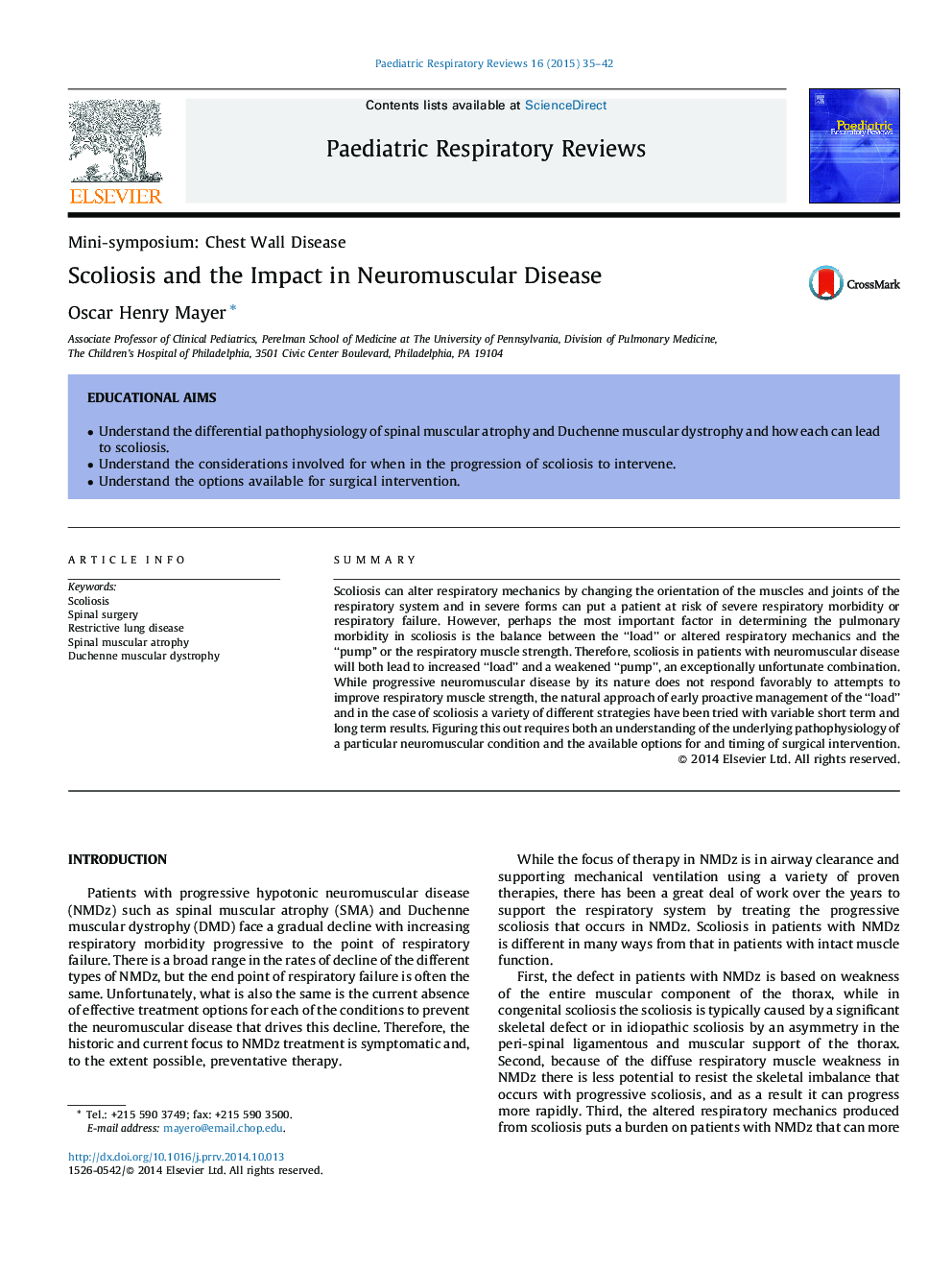| Article ID | Journal | Published Year | Pages | File Type |
|---|---|---|---|---|
| 4170962 | Paediatric Respiratory Reviews | 2015 | 8 Pages |
SummaryScoliosis can alter respiratory mechanics by changing the orientation of the muscles and joints of the respiratory system and in severe forms can put a patient at risk of severe respiratory morbidity or respiratory failure. However, perhaps the most important factor in determining the pulmonary morbidity in scoliosis is the balance between the “load” or altered respiratory mechanics and the “pump” or the respiratory muscle strength. Therefore, scoliosis in patients with neuromuscular disease will both lead to increased “load” and a weakened “pump”, an exceptionally unfortunate combination. While progressive neuromuscular disease by its nature does not respond favorably to attempts to improve respiratory muscle strength, the natural approach of early proactive management of the “load” and in the case of scoliosis a variety of different strategies have been tried with variable short term and long term results. Figuring this out requires both an understanding of the underlying pathophysiology of a particular neuromuscular condition and the available options for and timing of surgical intervention.
